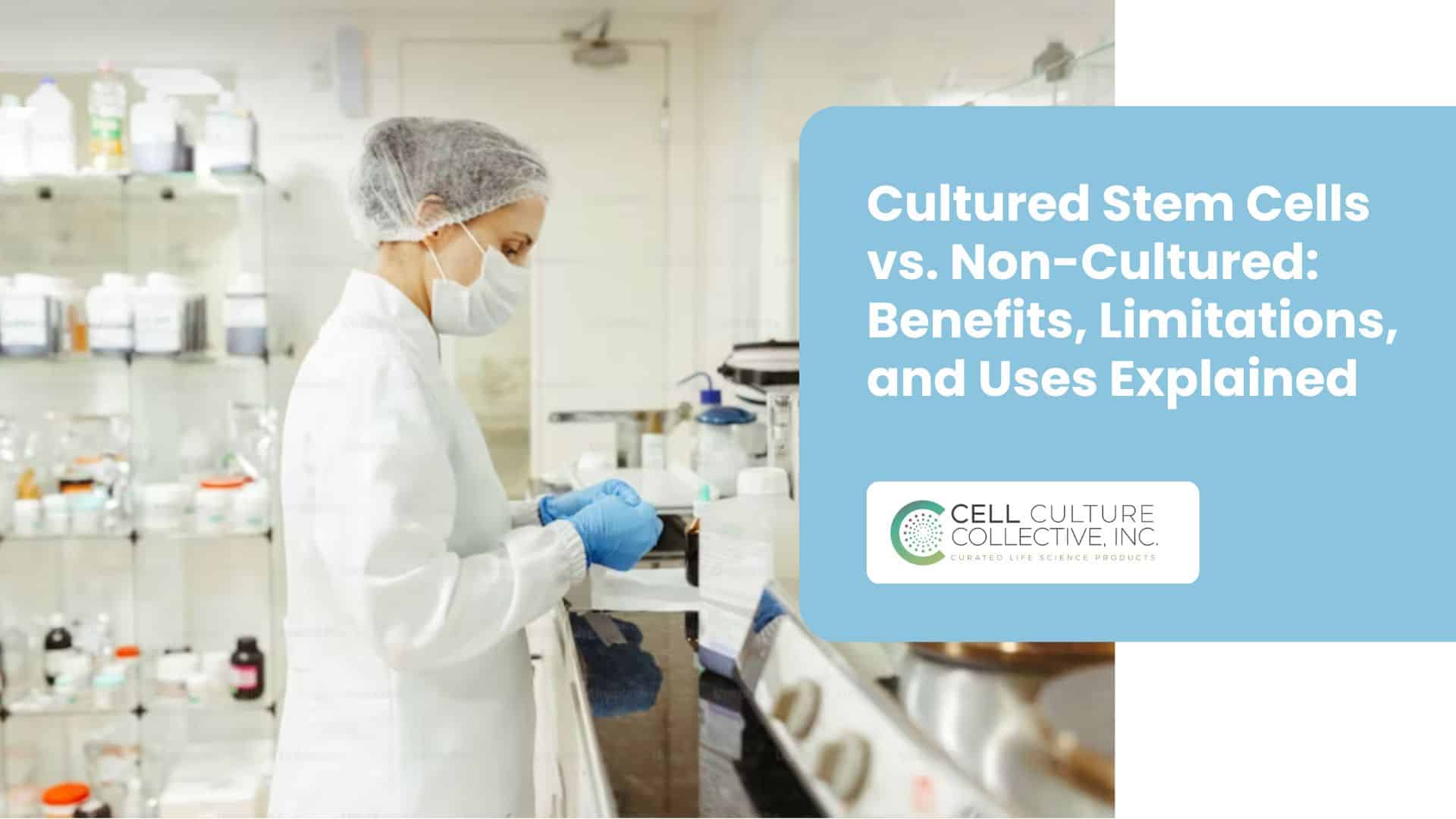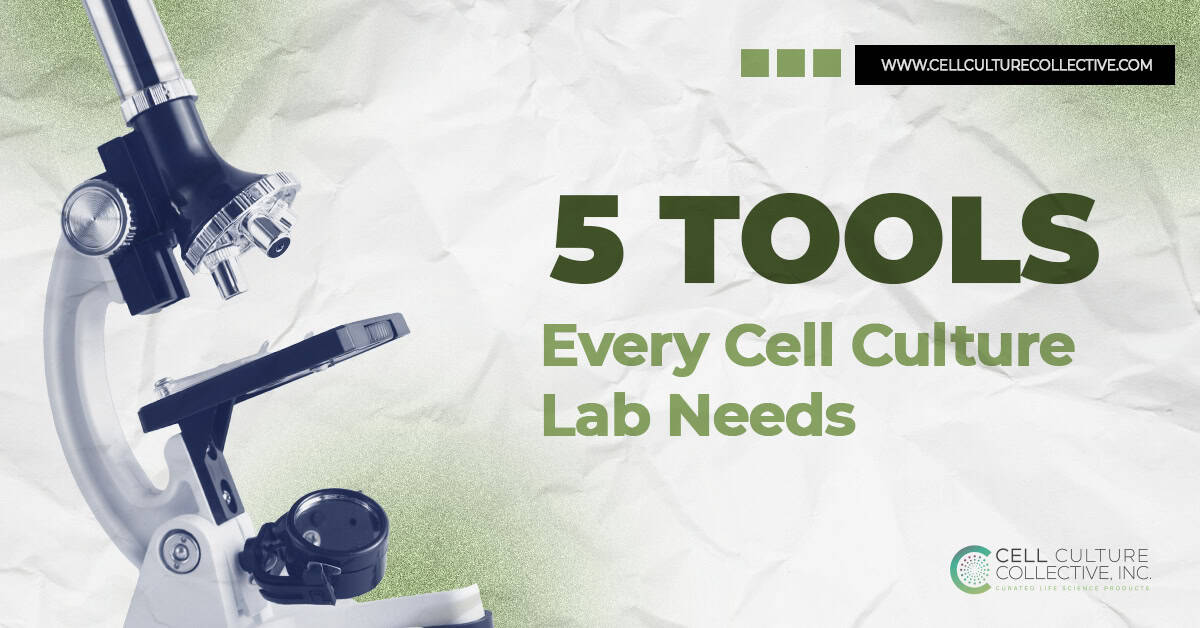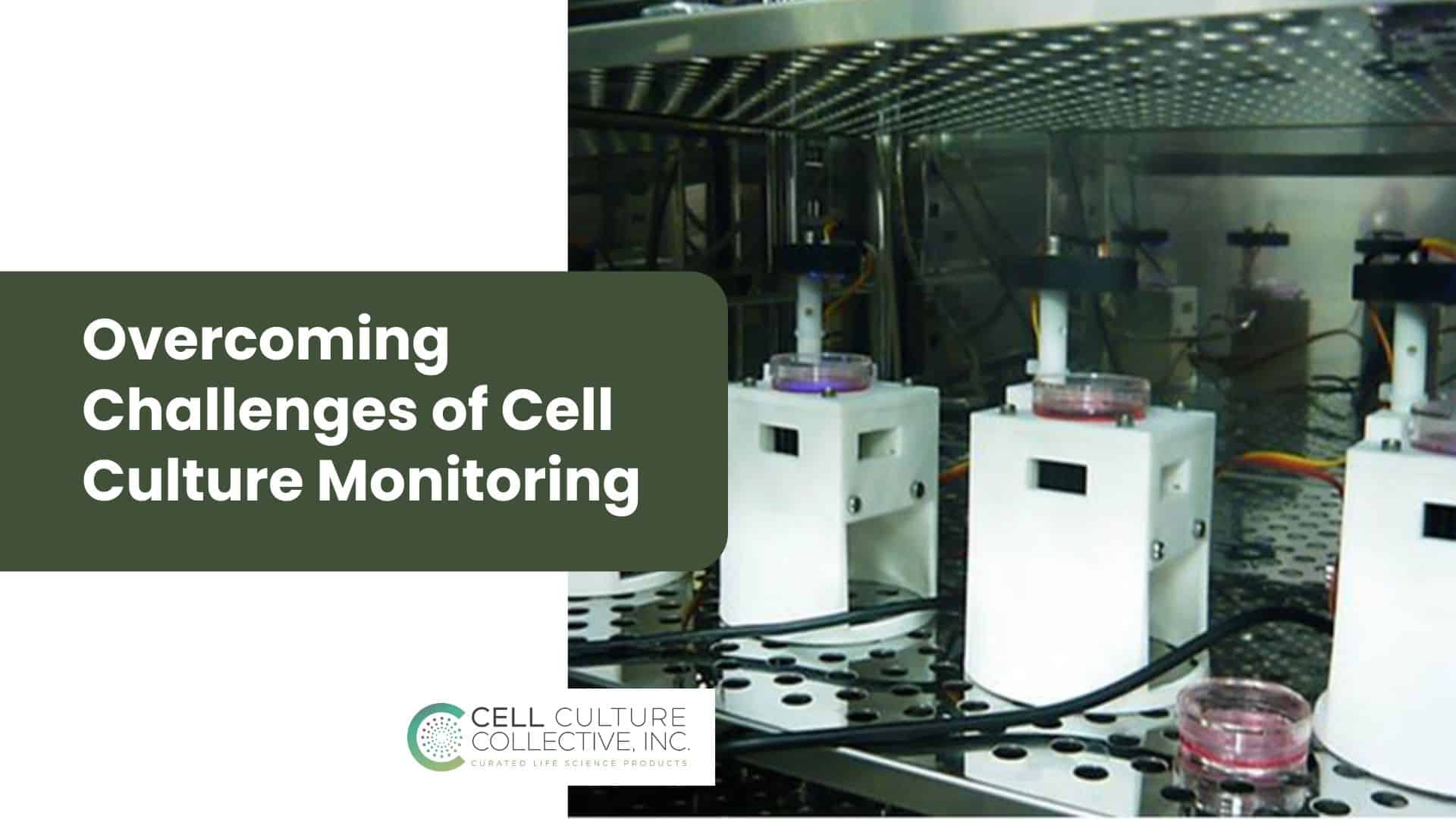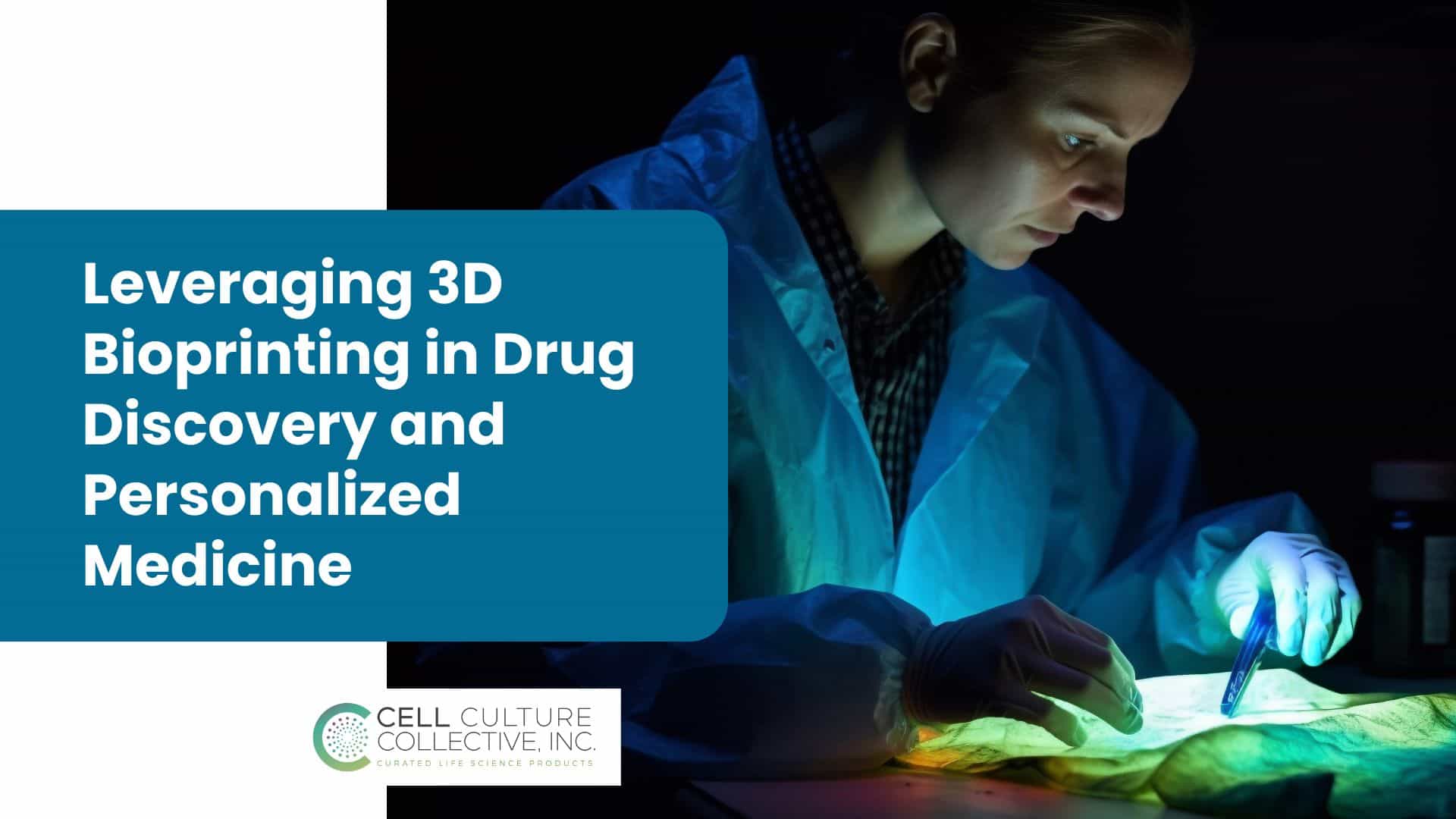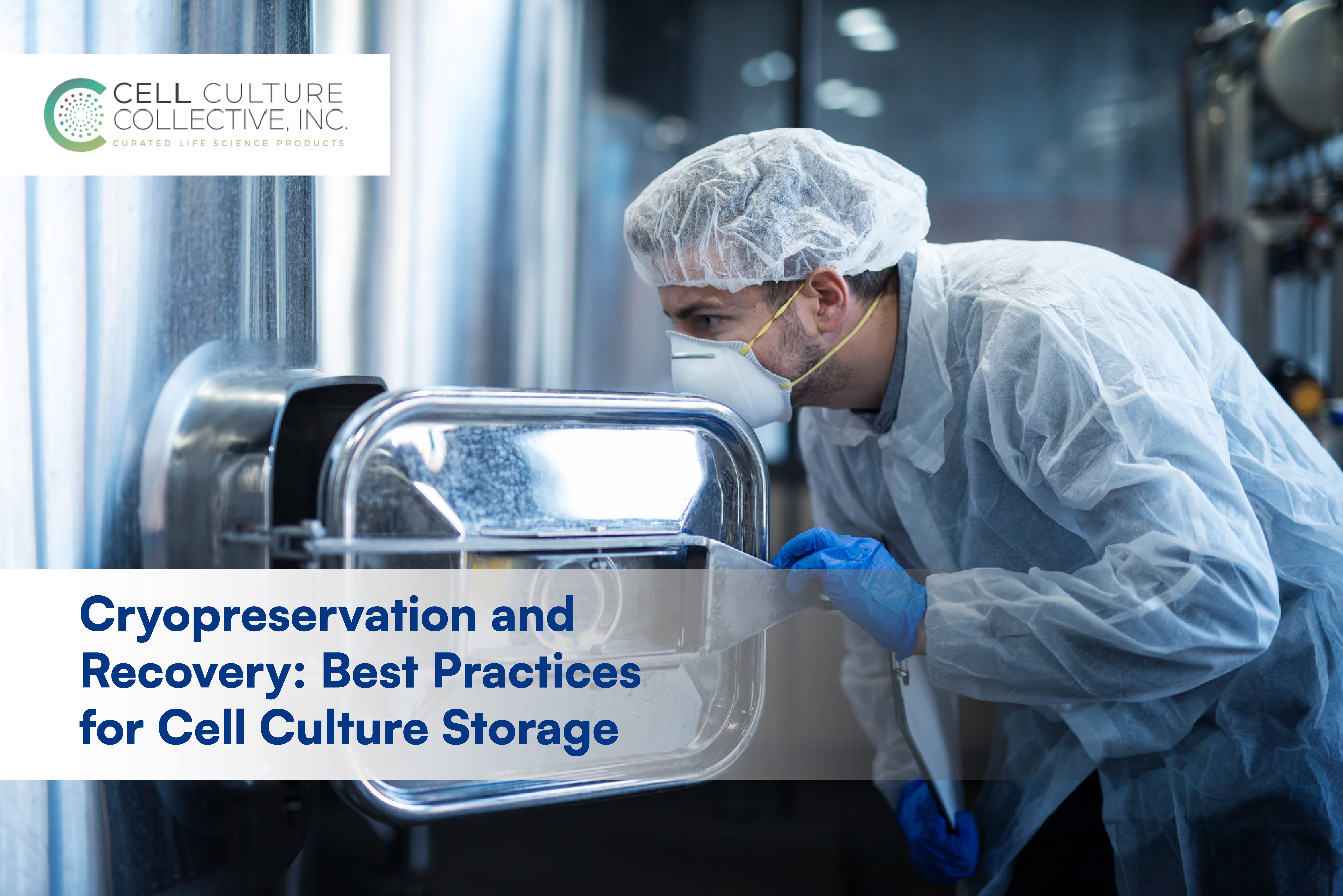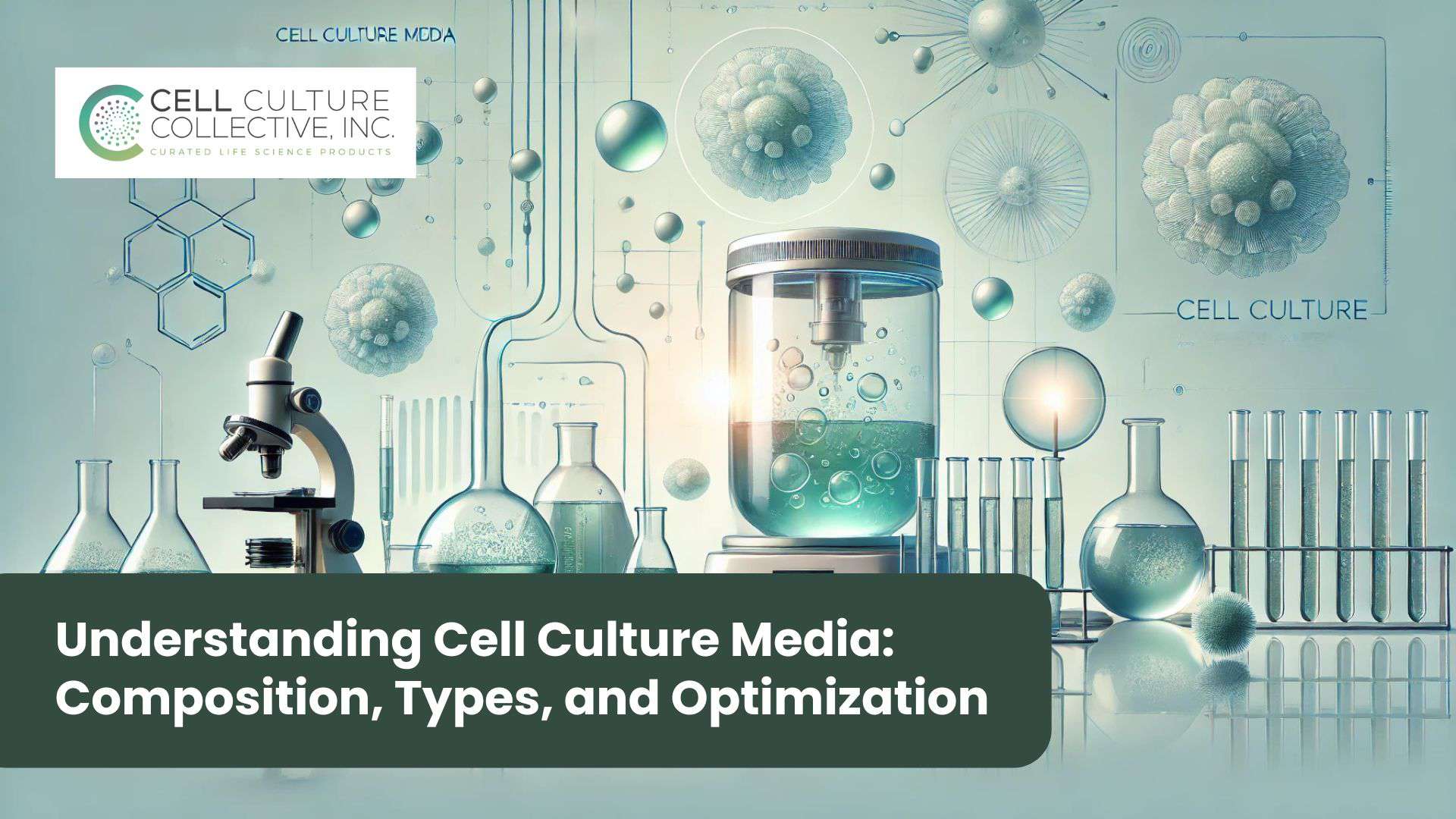Stem cells aren’t just another scientific discovery—they’re a gateway to transforming healthcare as we know it. From repairing damaged tissues to reversing chronic conditions, stem cells bring an extraordinary edge to medical treatments. But like any breakthrough, there’s more than one way to unlock their potential.
In the world of stem cell therapy, we’ve got two main contenders: cultured and non-cultured stem cells. Cultured stem cells are grown in the lab, expanding in quantity and tailored for treatments that demand precision. On the flip side, non-cultured stem cells are all about speed and simplicity—harvested straight from the source and ready for action.
Each approach comes with its own perks and challenges, from the controlled expansion of cultured cells to the natural, quick-turnaround benefits of non-cultured cells. In this blog, we’ll break down what sets these two apart, exploring the benefits, limitations, and real-world uses of each. By the end, you’ll see how these options shape the possibilities in regenerative medicine—and why choosing the right path matters more than ever.
Understanding the Stem Cell Culture Process
Overview of Stem Cell Culture
Cultured stem cells represent the meticulous art of science meeting medicine. Unlike stem cells used right out of the body, cultured stem cells go through a careful process of isolation and in vitro expansion. In the lab, scientists take stem cells from sources like bone marrow or fat tissue, placing them in controlled environments that provide the nutrients and conditions needed for growth.
This process allows researchers to grow stem cells in substantial quantities—enough to meet the demands of advanced therapies and research studies. By expanding stem cells in the lab, scientists gain the ability to create a near-endless supply, ensuring enough cells are available for treatments that require higher doses, consistency, and customization.
Why Culture Stem Cells?
Culturing stem cells is about more than just multiplying numbers; it’s about building a foundation for therapies that demand precision. In many regenerative treatments, having a sufficient quantity of cells is critical for success, especially for conditions that affect larger areas of the body or require higher dosages for effective results.
Additionally, cultured stem cells allow for specific tailoring, including the option to prime cells for certain therapeutic roles or to introduce genetic modifications for research purposes. Whether for disease modeling, drug testing, or developing targeted therapies, the culture process enables scientists to adapt stem cells to meet complex medical needs, opening up possibilities that non-cultured cells simply can’t match.
Benefits of Cultured Stem Cells
Culturing stem cells isn’t just about expanding numbers; it’s about unlocking possibilities that can only be achieved in a lab setting. Here are the key advantages that make cultured stem cells invaluable for advanced therapies:
1. Increased Cell Quantity for High-Dose Therapies
- Scaling for Impact: One of the greatest benefits of lab-cultured stem cells is the ability to scale. Lab-grown methods allow scientists to produce massive quantities of cells—an absolute game-changer for therapies that require high doses to be effective. This means that treatments targeting larger tissues or multiple areas of the body can rely on an abundant supply of stem cells.
- Meeting High-Dose Demands: For regenerative therapies where more is often better, cultured cells ensure there’s no compromise on dose size or consistency, delivering what natural extraction alone simply couldn’t offer.
2. Customization and Precision
- Genetic Modifications and Beyond: In the lab, stem cells can be primed for specific tasks, allowing scientists to make genetic modifications or guide cells to differentiate into particular cell types. This customization is crucial for therapies targeting unique or complex conditions where precision is paramount.
- Targeted Differentiation: Whether it’s encouraging stem cells to become bone cells for orthopedic treatments or nerve cells for neurological applications, the culture process enables an unmatched level of customization, aligning cells exactly with therapeutic goals.
3. Controlled Environment
- Sterility and Consistency: Cultured stem cells benefit from the rigor of a controlled lab environment. Sterile conditions mean a reduced risk of contamination, which translates to higher-quality cells and more reliable results.
- Enhanced Reliability: By growing stem cells in a monitored, contamination-free environment, researchers can consistently produce cells that meet the strict standards required for medical use. This controlled setting is especially beneficial for therapies needing dependable outcomes.
Limitations of Cultured Stem Cells
While cultured stem cells open up vast therapeutic possibilities, they come with their own set of challenges. Here’s a look at some of the key limitations that need to be considered:
1. Time and Resource Intensive
- Long Expansion Periods: Culturing stem cells isn’t a quick process. Growing cells in the lab takes time—often weeks—to reach the quantities needed for therapy. This waiting period can delay treatments, which isn’t ideal for conditions that require prompt intervention.
- Resource Demands: Beyond time, culturing stem cells requires specialized equipment, materials, and personnel, making it a resource-intensive process. This necessity for dedicated lab facilities and skilled staff can significantly add to the cost, which may limit accessibility for some therapies.
2. Regulatory Challenges
- Strict Oversight and Compliance: Due to the extensive in vitro manipulation involved, cultured stem cells are under strict regulatory scrutiny. Agencies like the FDA and EMA have rigorous guidelines to ensure safety and effectiveness, meaning labs must meet detailed compliance standards.
- Delays in Approval: This regulatory oversight, while essential for patient safety, can also lead to extended approval timelines for new treatments. For therapies that require immediate clinical application, non-cultured cells may provide a faster, less regulated alternative.
3. Potential for Cellular Aging and Alteration
- Genetic and Epigenetic Changes: Prolonged culturing can sometimes lead to unwanted genetic or epigenetic changes in the cells. These alterations might affect cell behavior, potentially impacting the therapy’s effectiveness and safety.
- Cellular Senescence Risk: Over time, stem cells can experience aging in the lab, leading to senescence (the loss of a cell’s power to divide and grow). This risk underscores the importance of careful monitoring and quality control during the culture process.
What Are Non-Cultured Stem Cells?
Non-cultured stem cells represent a streamlined, natural approach in the realm of regenerative medicine. By skipping the lengthy lab processes required for cultured cells, non-cultured stem cells offer a faster path to treatment, maintaining their natural properties for quick and effective use.
Definition and Collection Process
- Direct from Source to Treatment: Non-cultured stem cells are harvested directly from the patient or a donor and are used with minimal lab processing. Unlike cultured cells, they aren’t expanded or manipulated in vitro, meaning they retain their natural state.
- Preserving Native Characteristics: This minimal handling ensures that the cells are as close to their original biological form as possible, potentially reducing the risk of genetic or cellular changes that can occur during prolonged culturing.
Quick Turnaround for Immediate Treatment
- Rapid Availability: One of the major advantages of non-cultured stem cells is their readiness for immediate use. Since they don’t undergo the lengthy expansion phase, they’re available shortly after extraction, making them ideal for urgent treatments.
- Perfect for On-the-Go Therapies: This quick turnaround is especially valuable in scenarios where prompt intervention is critical, such as treating acute injuries or in orthopedic applications where waiting weeks for cultured cells isn’t practical.
Applications of Non-Cultured Stem Cells
Non-cultured stem cells excel in treatments that benefit from their immediacy and minimal processing. Here are some key areas where these cells are making a substantial impact:
1. Orthopedic and Musculoskeletal Treatments
- Joint and Tendon Repair: Non-cultured stem cells, particularly those derived from bone marrow (like bone marrow aspirate concentrate or BMAC), have shown promise in treating joint and tendon injuries. By injecting these cells directly into the affected area, physicians can promote healing and reduce inflammation without the delay of lab expansion.
- Tissue Support and Pain Relief: This approach provides a natural option for patients dealing with pain or mobility issues in areas like the knees, shoulders, and tendons, supporting tissue repair and potentially reducing the need for invasive procedures.
2. Wound Healing and Skin Regeneration
- Accelerated Tissue Repair: Non-cultured stem cells are also being applied in chronic wound care, offering a faster healing option for conditions like diabetic ulcers, burns, and other difficult-to-heal wounds. When introduced to the wound area, these cells can support new tissue formation and speed up recovery.
- Natural Skin Regeneration: By using cells in their native form, this method promotes natural skin regeneration, which is especially valuable in treatments aimed at restoring damaged skin without prolonged lab processing.
3. On-the-Go Therapies for Acute Conditions
- Immediate Response for Urgent Care: Non-cultured stem cells are ideal for “on-the-go” treatments, where minimal processing is key to achieving quick results. This immediacy makes them suitable for treating acute injuries, where waiting for cultured cells isn’t an option.
- Versatile in Emergency Settings: With minimal handling and faster application, non-cultured stem cells can be a practical choice for therapies that demand an immediate, efficient intervention.
Lab-Grown vs. Natural Stem Cells: A Comparative Analysis
| Aspect | Cultured (Lab-Grown) Stem Cells | Non-Cultured (Natural) Stem Cells |
| Processing Time and Availability | Cultured stem cells undergo a lengthy in vitro expansion process, often taking several weeks to reach sufficient cell quantities. This extended timeline can delay treatment initiation but is essential for therapies requiring large cell numbers. | Non-cultured stem cells are extracted and minimally processed, allowing for rapid deployment. This quick turnaround is beneficial for conditions requiring immediate intervention, though it limits the available cell quantity. |
| Cell Quantity and Manipulation | In a lab setting, stem cells can be expanded to create high doses and tailored for specific needs. This process enables scientists to modify cells genetically, or even direct them toward certain cell lineages, making them versatile for complex therapeutic applications. | Limited to the natural quantity harvested directly from the donor. Since non-cultured cells are minimally manipulated, they retain their innate biological properties but lack the customizable traits achieved through laboratory expansion and genetic modification. |
| Applications Based on Therapy Type | Suited for personalized treatments, tissue engineering, and regenerative medicine therapies that require large quantities of cells or specific cell types. For example, cultured stem cells are advantageous in creating tissue models for research or generating specialized cell types for organ repair. | Effective for treatments that demand immediacy, such as acute injury repair, orthopedic therapies, or wound healing, where naturally occurring cell numbers and properties suffice. Non-cultured cells are ideal for single-session applications and therapies that don’t require extended cell populations or tailored functionality. |
Conclusion: Choosing the Right Approach for Stem Cell Therapy
Cultured and non-cultured stem cells each bring unique strengths to the forefront of regenerative medicine. Cultured stem cells, with their high quantities, customization options, and controlled lab environment, are paving the way for advanced treatments, particularly in complex cases where precision and scale are critical. These lab-grown cells enable high-dose therapies, personalized interventions, and tissue engineering solutions that would be challenging to achieve with naturally extracted cells.
On the other hand, non-cultured stem cells offer a quick and accessible alternative, especially in treatments where immediacy is key. With minimal processing and an innate biological structure, non-cultured cells can be rapidly applied to address acute injuries, promote wound healing, and offer a more natural approach for patients who need results without delay.
Ultimately, the choice between cultured and non-cultured stem cells depends on the specific needs of each therapy—whether it’s the flexibility and scale of lab-cultured cells or the convenience and immediacy of natural ones. As regenerative medicine continues to evolve, so too will the strategies for using these powerful cells, bringing us closer to realizing the full potential of stem cell therapy.

